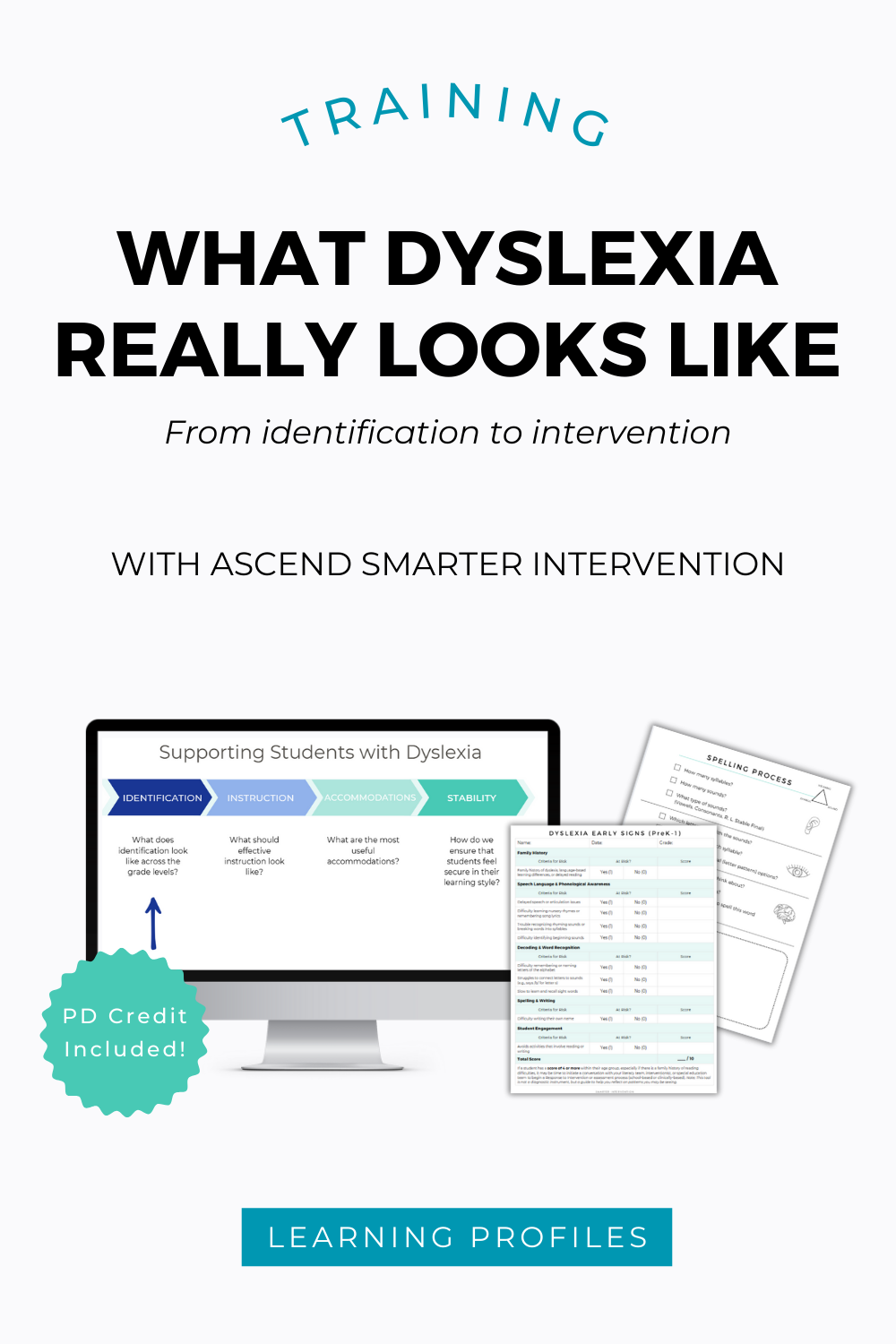4 Things Every Teacher Needs to Know About Dyslexia
Picture your classroom for a moment. Maybe 20, 25 students sitting in front of you, each with their own learning style, strengths, and struggles.
Statistically speaking, about 1 in 5 of them may have dyslexia. That means in a class of 25, it’s likely that five students are experiencing significant difficulty learning to read, not because they aren’t trying or aren’t smart, but because their brain processes written language differently.
Whether you're a teacher or a parent, understanding how dyslexia presents (and how to support it) is one of the most powerful ways to create a classroom where all students can thrive. Here are four key things every educator should know:
1. Dyslexia has nothing to do with intelligence.
This is one of the biggest and most damaging myths. Students with dyslexia are often exceptionally bright, curious, and capable. In fact, research has shown that many individuals with dyslexia have average to above-average intelligence.
The challenge lies not in their ability to learn, but in how they process and retrieve information, especially written language. With the right kind of instruction, students with dyslexia can and do learn to read. They just need a different pathway.
2. Dyslexia is brain-based, and it runs in families.
Dyslexia is a neurobiological difference in how the brain handles phonological processing, working memory, and rapid naming. It’s also genetic, often running through families, even if it was never formally diagnosed.
A parent or grandparent might remember hating reading or having a hard time learning to spell. That struggle may have gone unrecognized at the time, but is now understood as part of the dyslexia spectrum.
3. Students with dyslexia need structured, explicit, and targeted instruction.
Here’s the good news: dyslexia is manageable (and can be very effectively supported) when students receive the right instruction. The most effective instruction for students with dyslexia is:
Systematic (there’s a clear scope & sequence),
Explicit (skills are taught directly, not assumed), and
Targeted (students need instruction specifically targeted to their identified areas of need).
Instructional models based on the Science of Reading align with these principles and are critical for closing the gap for struggling readers. You can learn more about effective literacy instruction for students with dyslexia in our free on-demand training library!
4. Not all reading difficulties are dyslexia.
While dyslexia is common, it’s not the only reason a student may struggle with reading. Some students may have difficulty with comprehension, language processing, attention, or background knowledge, but not dyslexia.
It’s important to look at specific patterns in data and performance. A student who decodes well but doesn’t understand what they’ve read needs a different kind of support than a student who can’t break down words. Understanding the difference helps us provide the right kind of help.
The Bottom Line
Dyslexia is real, common, and supportable. And with the right tools, training, and mindset, teachers can make a life-changing difference for these students.
Concerned about dyslexia?
We’ve created a free checklist that highlights the most common signs of dyslexia across ages and settings, including what to look for in conversation, reading tasks, and writing.
👉 Download the Dyslexia Symptoms Checklist here!
Want to Learn More?
Check out our On-Demand Professional Development Training:
“What Dyslexia Really Looks Like: From Identification to Intervention”
In this training, we walk through:
How dyslexia presents differently across ages and grade levels
Why some students “fly under the radar” until academic demands increase
Practical ways to identify patterns early and connect students with the right support (from accommodations to instruction
How to manage conversations around dyslexia
You don’t want to miss this one!


